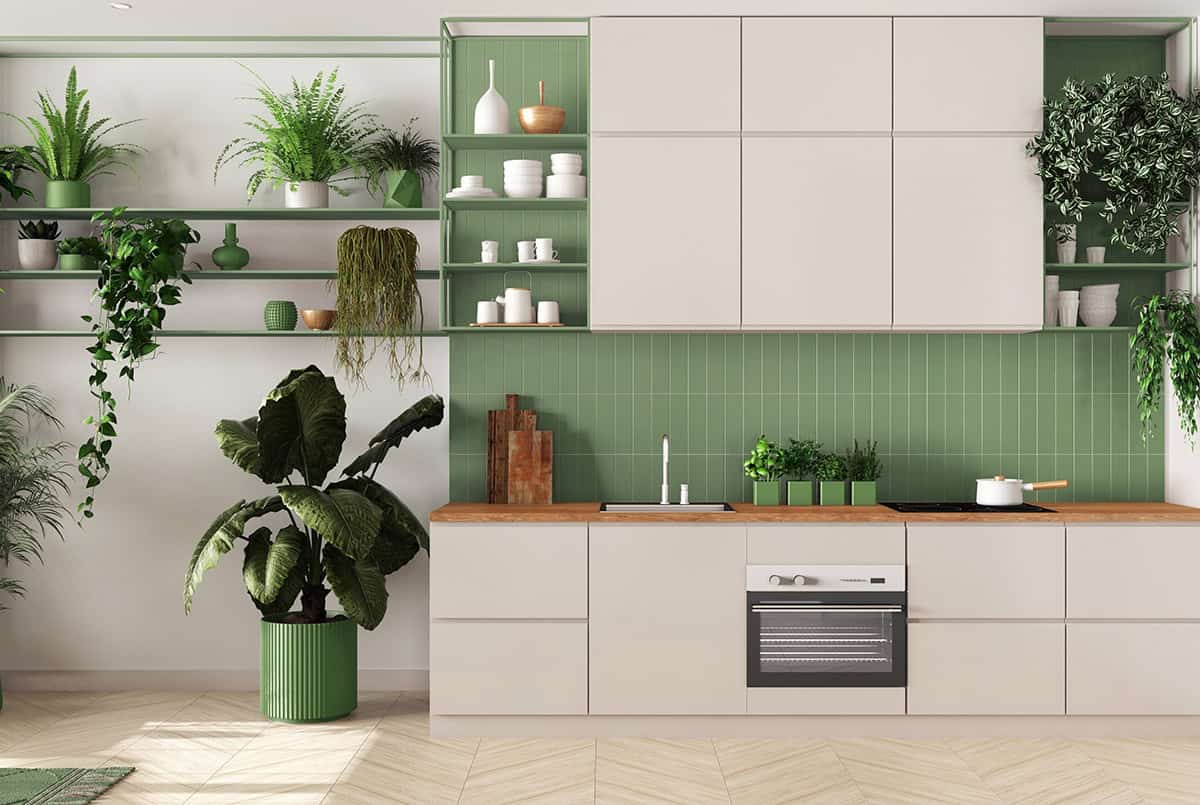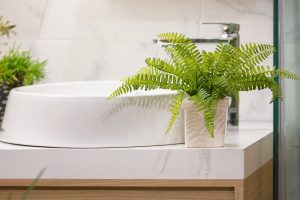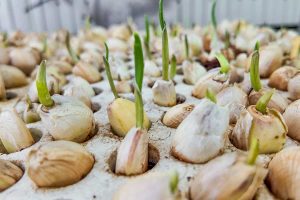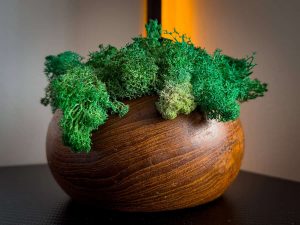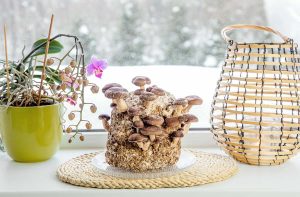Every home has those awkward spaces that are tricky to style, like the top of cabinets. The good news? You can use these high ledges to showcase easy-care plants that add warmth, movement, and greenery to your space. These 20 options offer a fresh approach and turn empty spaces into something special.
Table of Contents
- Best Plants For The Top Of Cabinets
- Pothos (Epipremnum Aureum)
- Heartleaf Philodendron (Philodendron Hederaceum)
- English Ivy (Hedera Helix)
- Spider Plant (Chlorophytum Comosum)
- String Of Pearls (Senecio Rowleyanus)
- String Of Hearts (Ceropegia Woodii)
- Golden Pothos
- Neon Pothos
- Hoya (Hoya Carnosa Or Hoya Pubicalyx)
- Peperomia Hope
- ZZ Plant (Zamioculcas Zamiifolia)
- Snake Plant (Sansevieria Trifasciata)
- Trailing Jade (Senecio Jacobsenii)
- Lipstick Plant (Aeschynanthus Radicans)
- Dischidia (Dischidia Nummularia Or Ovata)
- Prayer Plant (Maranta Leuconeura)
- Chinese Evergreen (Aglaonema)
- Scindapsus Pictus (Satin Pothos)
- Tradescantia Zebrina (Wandering Jew)
- Burro’s Tail (Sedum Morganianum)
Best Plants For The Top Of Cabinets
Let’s start with the most popular plants that elevate any cabinet space.
Pothos (Epipremnum Aureum)
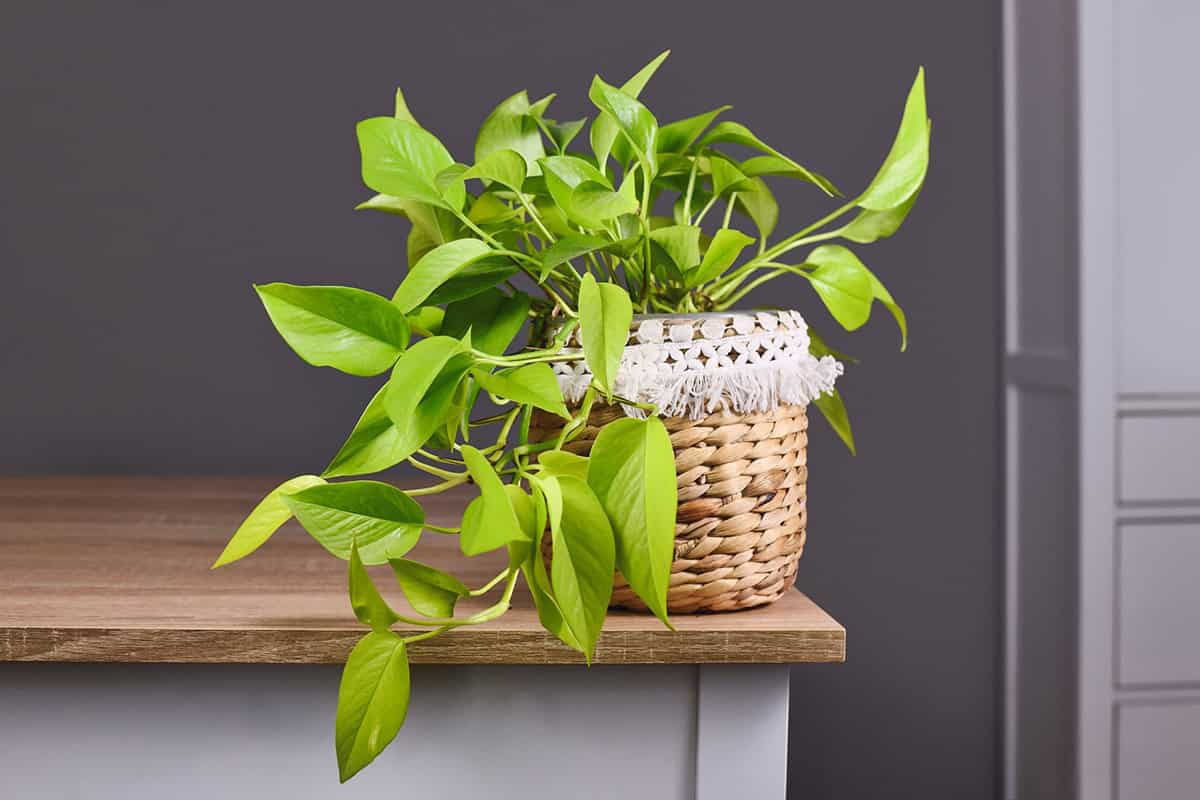
You can keep pothos almost anywhere thanks to its low maintenance needs. Its trailing vines spill nicely over the top of cabinets. Pothos tolerates low light but prefers bright, indirect sunlight.
Water only when the top inch of soil dries out. It’s also known for removing toxins from the air, making your space a bit fresher. Pruning is simple and encourages fuller growth. If you want a forgiving and attractive trailing plant, pothos stands out as a great choice.
Heartleaf Philodendron (Philodendron Hederaceum)
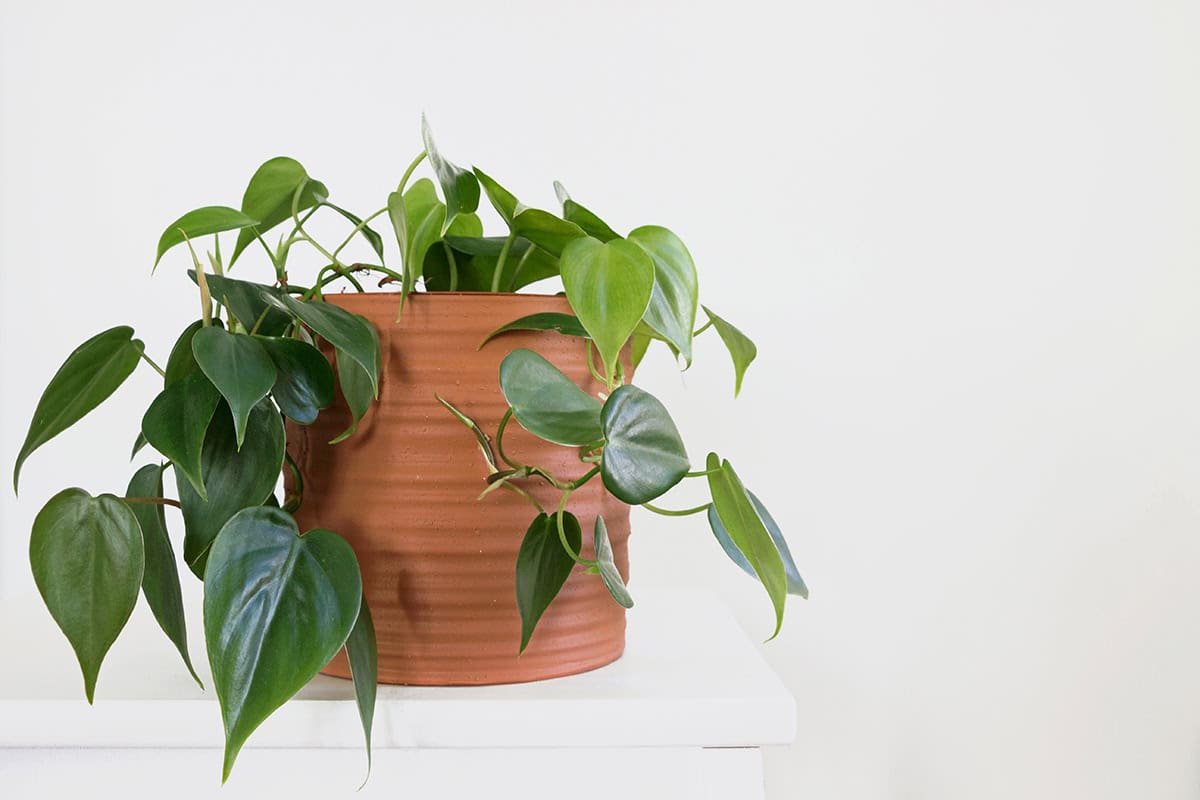
Heartleaf Philodendron features heart-shaped leaves that grow quickly. Its vining nature lets it drape attractively from elevated places, such as your upper cabinets.
This plant handles a range of light, though it thrives with indirect sunlight. Water when the soil feels dry to the touch. It adapts easily, even if you neglect it sometimes. The Heartleaf Philodendron is pet-friendly compared to other houseplants but can still be toxic if chewed, so keep it out of reach of pets and children.
English Ivy (Hedera Helix)
You’ll see English Ivy’s classic look as soon as it starts cascading over your cabinets. Its evergreen vines offer dense and glossy foliage that grows in a variety of patterns. English Ivy is known as a low-maintenance option that prefers moderate to bright, indirect light.
Keep soil consistently moist but not soggy. This plant can help reduce indoor air pollutants. Regular trimming keeps it tidy. Note that English Ivy can be toxic to pets if eaten, so place it with care.
Spider Plant (Chlorophytum Comosum)
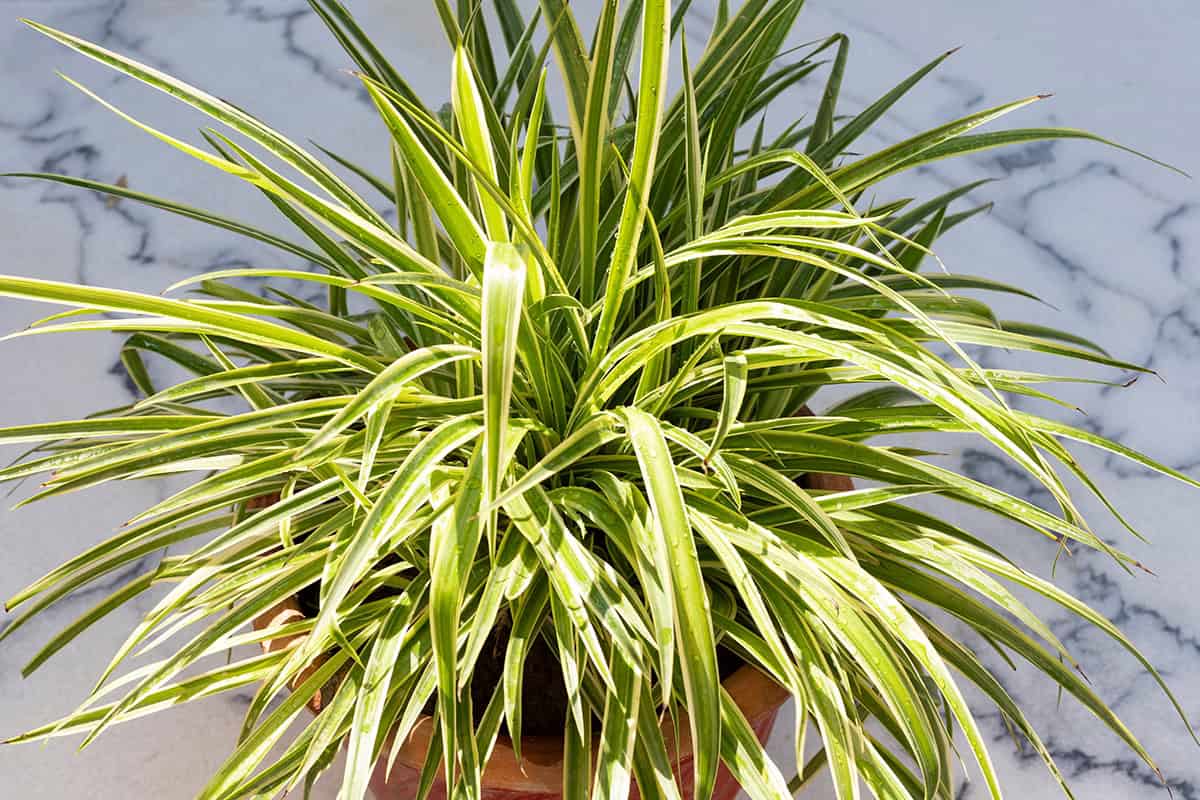
Spider plant boasts elegant arching leaves and small plantlets that dangle from long stems, making it visually dynamic above cabinets. Known for being easy to grow, it tolerates various light levels but does best with bright, filtered light.
Water when the soil dries. Spider plants clean the air of common household chemicals. If you want an adaptable and lively plant, spider plant fits the bill for top-of-cabinet placement.
String Of Pearls (Senecio Rowleyanus)
String of Pearls draws immediate attention with its round, bead-like leaves trailing down. It does best with bright, indirect sunlight and needs well-draining soil due to its succulent nature.
Let the soil dry thoroughly between waterings to prevent rot. The cascading stems bring a unique, whimsical touch. If you have pets, keep it away from their reach as it is toxic if ingested.
String Of Hearts (Ceropegia Woodii)
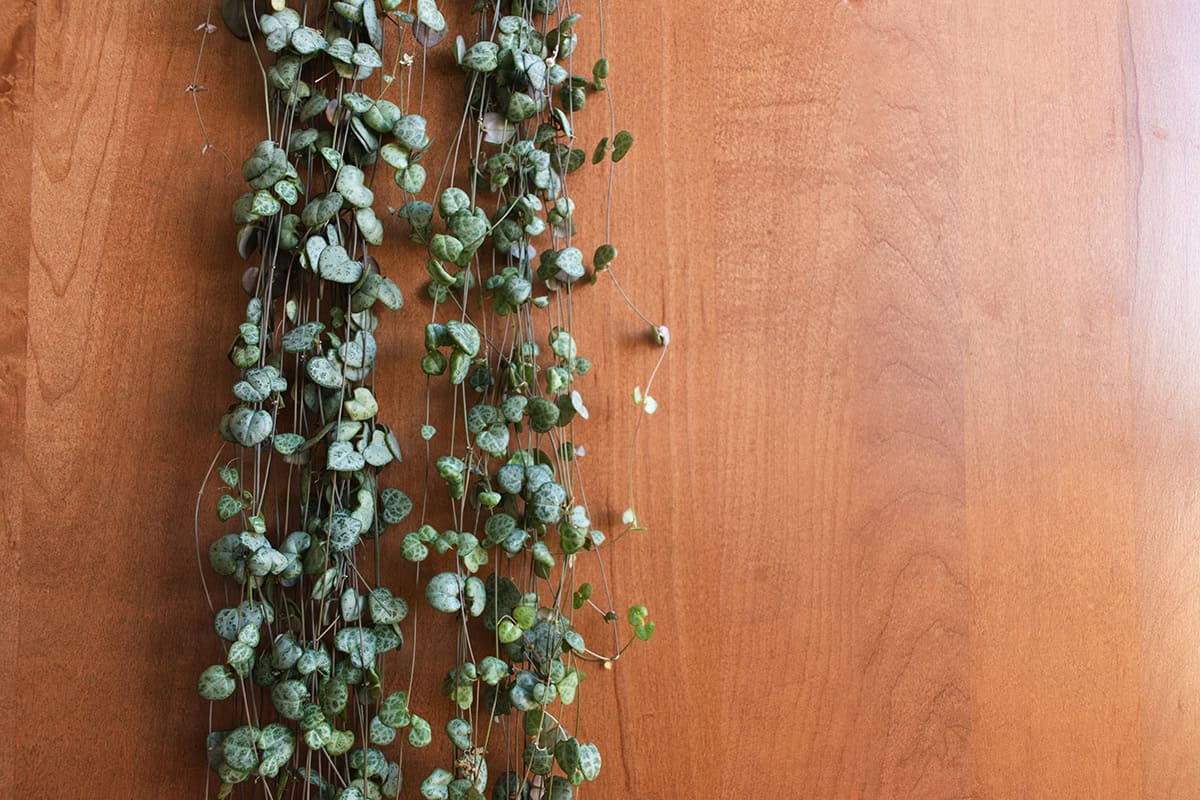
String of Hearts stands out for its dainty, heart-shaped leaves with silvery accents. Its thin vines can grow several feet long, creating a soft, draping effect.
Bright, indirect light helps the leaves develop strong patterns. Allow the soil to dry out between waterings. Its compact design fits well atop cabinets without taking up much space. String of Hearts is non-toxic, but it’s always best to keep plants out of reach for safety.
Golden Pothos
Golden Pothos shares many qualities with traditional pothos, but its green and yellow variegation sets it apart. It’s just as easy to care for.
This variety prefers moderate to bright filtered light but can adjust to less. Allow soil to dry out between waterings. Its cascading leaves add warmth and color above cabinets. You can also trim and propagate cuttings easily for even more plants.
Neon Pothos
Neon Pothos catches the eye due to its electric lime-green leaves. If you want a bold splash of color, Neon Pothos delivers this effortlessly above your cabinets.
Bright indirect light brings out the brightest color, but it will also grow in lower light. This variety only needs watering when the soil feels dry. Neon Pothos is forgiving of occasional neglect and offers a modern, vibrant accent where you place it.
Hoya (Hoya Carnosa Or Hoya Pubicalyx)

Hoya plants have thick, waxy leaves and clusters of star-like flowers that bloom in ideal conditions. Their semi-succulent nature means they store water, so they survive dry spells if you forget to water occasionally.
Hoyas grow well in moderate to bright, indirect light. Their trailing vines create a unique texture above cabinets. Choose Hoya Carnosa for classic, rounded leaves or Hoya Pubicalyx for slightly elongated, speckled foliage.
Peperomia Hope
Peperomia Hope offers round, plump green leaves that grow on delicate trailing stems. It has a compact form but will spill neatly over cabinet edges.
Peperomia needs moderate to bright indirect light. Water sparingly; it dislikes soggy soil. The small size means you can use multiple plants together for a lusher effect. It is also non-toxic, making it suitable for homes with pets.
ZZ Plant (Zamioculcas Zamiifolia)
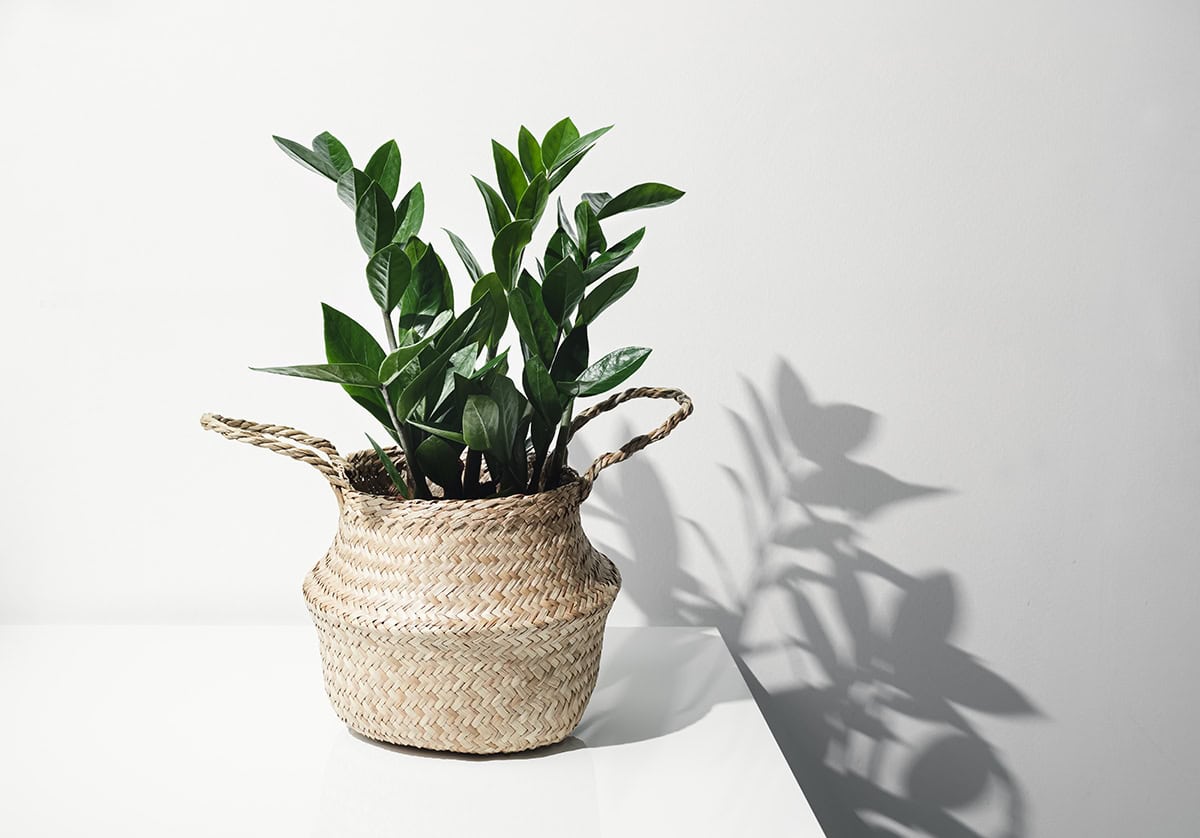
ZZ Plant features upright, glossy leaves that require minimal care. It tolerates low light better than many other houseplants. Place it above cabinets where conditions can be dry or dim.
You’ll only need to water when the soil is completely dry. ZZ Plant handles infrequent watering due to its rhizome roots. Its structural form gives height and architectural interest on top of cabinets. It’s important to note that the ZZ Plant is toxic if ingested.
Snake Plant (Sansevieria Trifasciata)
Snake Plant, sometimes called Mother-in-Law’s Tongue, stands out for its tall, upright leaves with striping and variegation. You can put it on top of cabinets for a modern, clean look that doesn’t trail.
It thrives in almost any light and needs little water. Snake Plant removes toxins such as formaldehyde from the air. It works well for forgetful plant owners.
Trailing Jade (Senecio Jacobsenii)
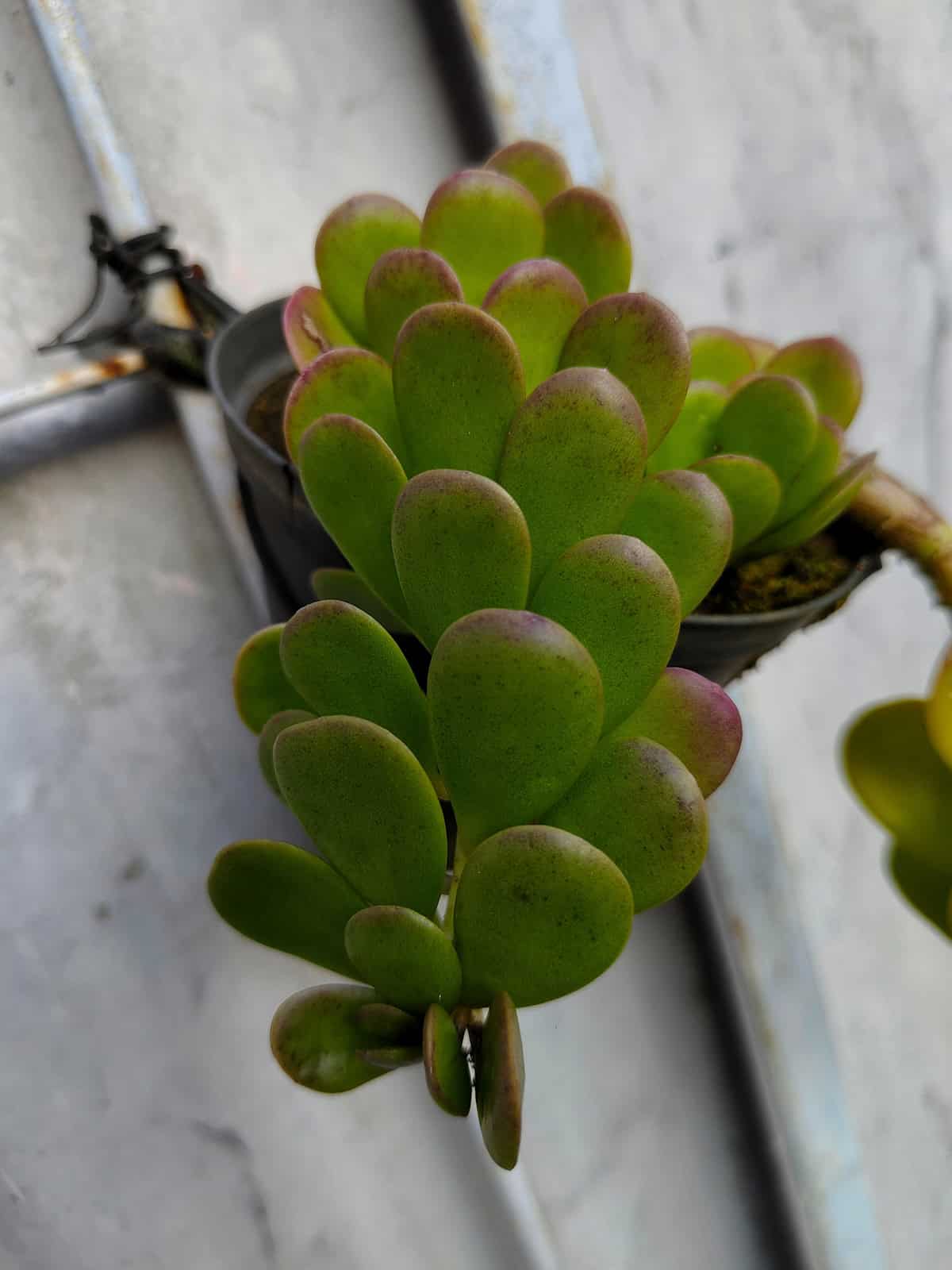
Trailing Jade has fleshy, oval leaves and stems that cascade elegantly over elevated spots.
It does best in bright, indirect sunlight but handles some direct light. Let the soil dry before watering again. Trailing Jade’s compact growth habit helps prevent a messy appearance. The succulent leaves enable the plant to store water well.
Lipstick Plant (Aeschynanthus Radicans)
Lipstick Plant gets its name from its tubular red flowers that resemble tubes of lipstick. Its glossy, green foliage tumbles nicely over the edge of cabinets.
Bright, filtered sunlight brings out the best flowering. Keep the soil evenly moist but not soggy. When healthy, this plant can produce blooms several times a year. Lipstick Plants add a splash of unexpected color to high spaces.
Dischidia (Dischidia Nummularia Or Ovata)
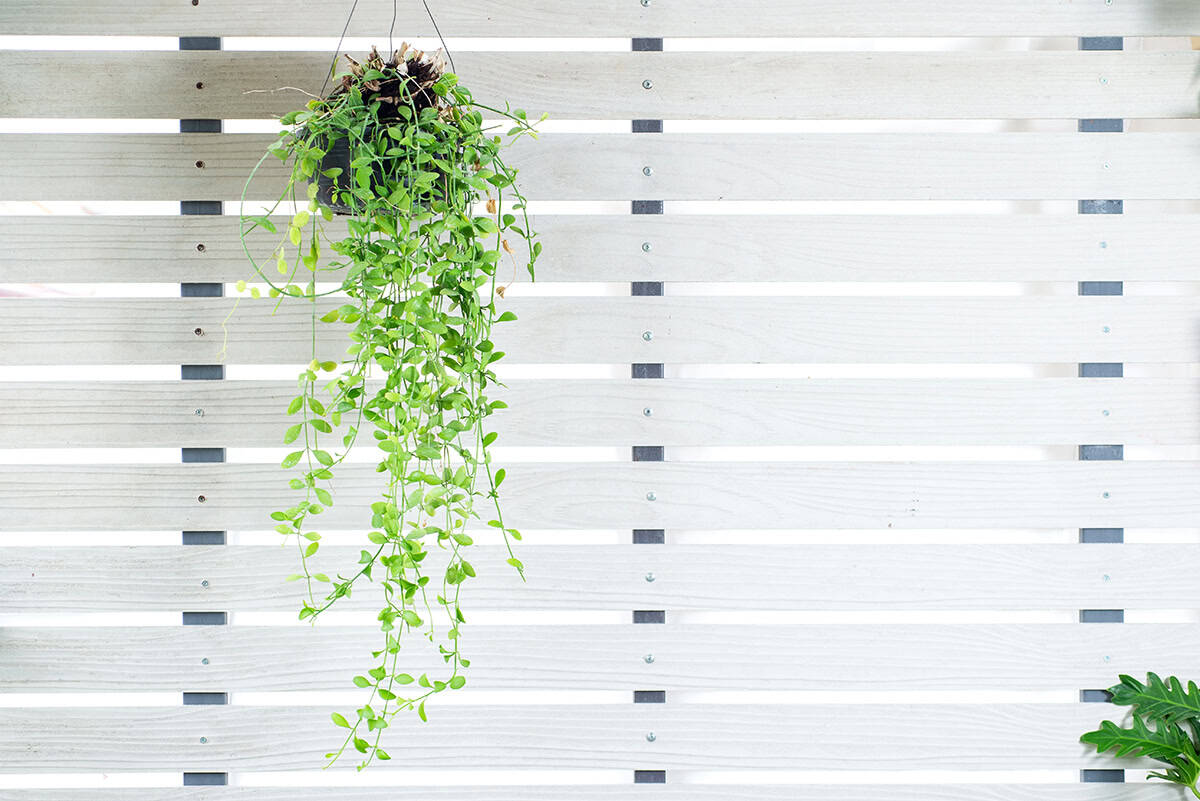
Dischidia plants have small, thick leaves, and a trailing growth habit suited for top-of-cabinet display. Dischidia Nummularia features round, coin-shaped foliage, while Dischidia Ovata has slightly larger leaves with striking veining.
These plants thrive in bright, indirect light and need good drainage. Water sparingly; roots may rot if left wet. Their compact, whimsical appearance works well in tight or narrow cabinet spaces.
Prayer Plant (Maranta Leuconeura)
Prayer Plant displays eye-catching patterned leaves that fold up at night, giving it its common name. Its oval-shaped leaves create a lush appearance when arranged on top of cabinets.
Moderate to bright indirect light suits it best. Keep the soil lightly moist but never soggy. Humidity helps encourage vivid colors in the leaves. Prayer Plant offers a soft, tropical accent in elevated spots.
Chinese Evergreen (Aglaonema)
Chinese Evergreen is appreciated for its broad, colorful leaves marked with patterns of silver, green, or red. Its upright form provides a bold focal point on top of cabinets.
Low to medium, indirect light works, but better leaf color develops in higher light. Water when the top of the soil dries. This plant tolerates occasional neglect and can help purify indoor air.
Scindapsus Pictus (Satin Pothos)
Scindapsus Pictus, or Satin Pothos, is recognized for its matte, velvety leaves with silvery spots. Its cascading stems look elegant from high spots.
Provide it with bright but indirect sunlight. Only water after the top inch of soil dries. Prune to control its length and encourage bushier growth. With striking foliage, Satin Pothos adds subtle luxury to your cabinet tops.
Tradescantia Zebrina (Wandering Jew)

Tradescantia Zebrina impresses with its striped purple and silver leaves. Its trailing growth creates a dramatic look across cabinet edges.
It prefers bright, indirect light, which deepens its vibrant colors. Allow soil to become slightly dry before watering again. Fast-growing, it quickly covers large spaces but benefit from regular trimming to prevent legginess.
Burro’s Tail (Sedum Morganianum)
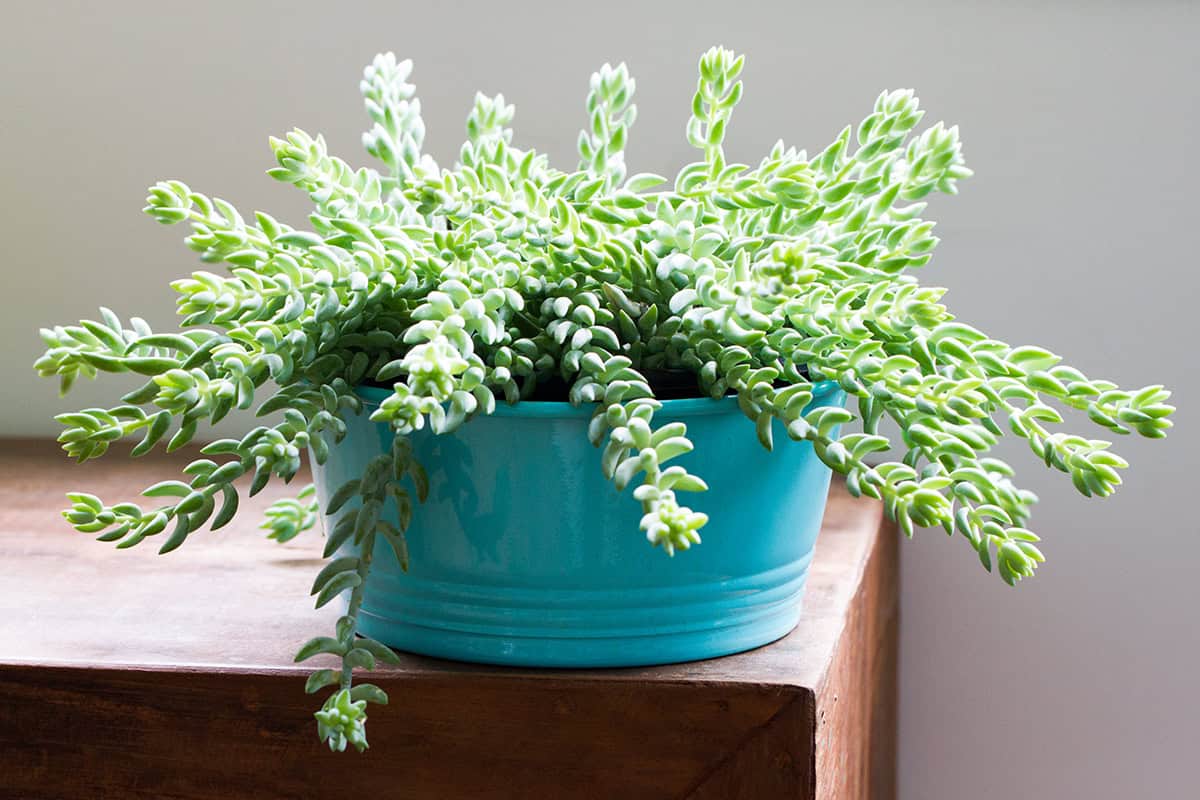
Burro’s Tail develops long, thick trailing stems covered with plump, blue-green leaves. Perfect for sunny tops of cabinets, it prefers lots of bright, indirect light.
Let soil dry nearly completely between waterings, as overwatering leads to rot. Avoid bumping or moving the plant often, since leaves are fragile and drop easily. Burro’s Tail delivers a distinctive, textural accent as it grows downward.
